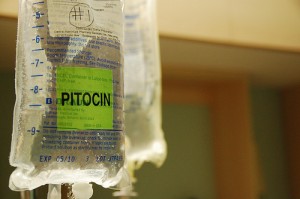GYN/Gu/Out-of-or/Anesthesia Complications Basics Quiz II
(227).webp)
This quiz assesses foundational knowledge in GYN\/GU and anesthesia complications, focusing on the bladder's innervation, sympathetic and parasympathetic responses, and impacts of conditions like BPH. It is essential for learners in medical fields, particularly those studying urology.
- 1.
Greg said to know this chart.*Calcineurin inhibitors like cyclosporine and tacrolimus are used to prevent allograft rejection by inhibiting T-cell activation.*
- 2.
The bladder's sympathetic response is provided by its innervation via the ____________ nerve (T11-L2 to L3).
- A.
Pelvic nerve
- B.
Hypogastric nerve
- C.
Vagus nerve
- D.
Pudendal nerve
Correct Answer
B. Hypogastric nerveExplanation
The hypogastric nerve enters the thoracolumbar (SNS) portion of the spinal cord (T11-L2 to L3) and supplies the sympathetic innervation of the bladder.Rate this question:
-
- 3.
The sensory, motor, and detrussor muscle of the bladder is supplied via the __________ nerve.
- A.
Hypogastric nerve
- B.
Pudendal nerve
- C.
Pelvic nerve
- D.
Vagal nerve
Correct Answer
C. Pelvic nerveExplanation
The pelvic nerve is located at S2-3.
When RELAXED, the detrussor muscle allows the bladder to store urine. When it CONTRACTS, urination occurs.Rate this question:
-
- 4.
The parasympathetic response of the bladder, as well as the internal and external sphincter, are innervated via the ____________ nerve.
- A.
Pudendal nerve
- B.
Vagal nerve
- C.
Hypogastric nerve
- D.
Pelvic nerve
Correct Answer
A. Pudendal nerveExplanation
The parasympathetic response of the bladder, as well as the internal and external sphincter, are innervated via the pudendal nerve. The pudendal nerve is responsible for controlling the voluntary muscles of the perineum, including those involved in urination. It originates from the sacral plexus and provides motor innervation to the external urethral sphincter, allowing for voluntary control over the release of urine. Therefore, the pudendal nerve is the correct answer in this context.Rate this question:
-
- 5.
Adequate regional anesthesia for most GU surgeries should encompass which dermatome?
- A.
T4
- B.
S2-3
- C.
T10
- D.
T7
Correct Answer
C. T10Explanation
Adequate regional anesthesia for most GU surgeries should encompass the T10 dermatome. This is because the T10 dermatome covers the region of the body where most of the genitourinary surgeries are performed. By targeting this specific dermatome with anesthesia, the surgeon can ensure that the patient does not experience pain or discomfort during the procedure.Rate this question:
-
- 6.
BpH causes bladder neck obstruction and may lead to:
- A.
GU infections
- B.
Fistula formation
- C.
Renal insufficiency
- D.
Bladder stones
Correct Answer(s)
A. GU infections
C. Renal insufficiency
D. Bladder stonesExplanation
BPH, or benign prostatic hyperplasia, is a condition where the prostate gland enlarges and causes obstruction of the bladder neck. This obstruction can lead to various complications. GU infections can occur because the stagnant urine in the bladder provides a suitable environment for bacterial growth. Renal insufficiency can result from the chronic obstruction and increased pressure on the kidneys, leading to decreased kidney function. Bladder stones can form due to the prolonged presence of urine in the bladder, which can crystallize and form stones. Therefore, GU infections, renal insufficiency, and bladder stones are all potential complications of BPH.Rate this question:
-
- 7.
The prostate gland begins to increase in size after the age of 35.
- A.
YOU RIGHT!
- B.
YOU WRONG!
Correct Answer
B. YOU WRONG!Explanation
It begins to increase after 40.Rate this question:
-
- 8.
A distended bladder in a patient with spinal cord injury can cause life-threatening hypertension that can lead to stroke, MI, and death, a phenomenon known as autonomic hyper/dys-reflexia.
- A.
True
- B.
False
Correct Answer
A. TrueExplanation
A distended bladder in a patient with spinal cord injury can cause autonomic hyper/dys-reflexia, which is a condition characterized by life-threatening hypertension. This increased blood pressure can lead to serious complications such as stroke, myocardial infarction (heart attack), and even death. Therefore, it is true that a distended bladder in a patient with spinal cord injury can cause life-threatening hypertension.Rate this question:
-
- 9.
The lithotomy position most commonly causes nerve injury to the:
- A.
Obturator nerve
- B.
Femoral nerve
- C.
Common peroneal nerve
- D.
Sciatic nerve
Correct Answer
C. Common peroneal nerveExplanation
The lithotomy position, which involves lying on the back with the legs elevated and flexed, can put pressure on the common peroneal nerve. This nerve runs along the outer side of the thigh and can be compressed or stretched in this position, leading to nerve injury. The obturator nerve, femoral nerve, and sciatic nerve are not typically affected by the lithotomy position.Rate this question:
-
- 10.
Due to venous absorption of irrigation fluid, TURP syndrome can cause:
- A.
CHF and pulmonary edema
- B.
Hypotension
- C.
Hypertension & Bradycardia
- D.
Confusion and Restlessness
Correct Answer(s)
A. CHF and pulmonary edema
B. Hypotension
C. Hypertension & Bradycardia
D. Confusion and RestlessnessExplanation
All are correct! Up to 2 liters of irrigation fluid can be absorbed causing dilutional hyponatremia and fluid volume overload.Rate this question:
-
- 11.
Which irrigation fluid used for GU cases can cause toxic levels of ammonia to accumulate, leading to temporary blindness?
- A.
Water
- B.
Glycine
- C.
Sorbitol
- D.
Mannitol
- E.
Cytol (Sorbitol & Mannitol)
Correct Answer
B. GlycineExplanation
Glycine (a non-essential amino acid) is metabolized to glycolytic acid and ammonia. Toxic levels of ammonia attribute to blindness that is resolved with normalized ammonia levels.Rate this question:
-
- 12.
Irrigation fluid should be:
- A.
Isotonic
- B.
Inexpensive
- C.
Electrolyte-rich
- D.
Non-hemolytic
- E.
Opaque
Correct Answer(s)
A. Isotonic
B. Inexpensive
D. Non-hemolyticExplanation
Irrigation should be:
Isotonic
Inexpensive
Non-electrolyte
Non-hemolytic
TransparentRate this question:
-
- 13.
Glycine is an ________________ neurotransmitter.
- A.
Excitatory
- B.
Inhibitory
Correct Answer
B. InhibitoryExplanation
Glycine is an inhibitory neurotransmitter because it acts to reduce or inhibit the activity of neurons in the nervous system. It binds to specific receptors in the brain and spinal cord, allowing chloride ions to enter the neuron and hyperpolarize it. This hyperpolarization makes it more difficult for the neuron to reach its threshold and generate an action potential, effectively reducing the excitability of the neuron and inhibiting its activity. Therefore, glycine plays a crucial role in regulating neuronal activity and maintaining a balance between excitation and inhibition in the nervous system.Rate this question:
-
- 14.
Hyponatremia causes confusion, headache, ________ QRS, and ST ______________.
- A.
Narrow, elevation
- B.
Wide, elevation
- C.
Narrow, depression
- D.
Wide, depression
Correct Answer
B. Wide, elevationExplanation
Hyponatremia is a condition characterized by low levels of sodium in the blood. When hyponatremia occurs, it can lead to changes in the electrical activity of the heart, specifically affecting the QRS complex and ST segment on an electrocardiogram (ECG). In this case, the correct answer is "wide, elevation," indicating that hyponatremia can cause a widening of the QRS complex and an elevation of the ST segment on an ECG. These changes are important to recognize as they can indicate potential cardiac complications associated with hyponatremia.Rate this question:
-
- 15.
A hypo-osmotic hyponatremia treated with a loop diuretic like furosemide will further drop the sodium due to Na+ wasting secondary to inhibition of Cl- reuptake.
- A.
YOU GOT IT!
- B.
NAH BRO!
Correct Answer
A. YOU GOT IT!Explanation
This is very true. Give 3-5% NaCl @Rate this question:
-
- 16.
Extracorporeal shock wave lithotripsy should be delivered ________ msec after the R wave to prevent R-on-T phenomenon.
- A.
5
- B.
10
- C.
15
- D.
20
Correct Answer
D. 20Explanation
This prevents acardia.Rate this question:
-
- 17.
_____________ syndrome is progressive tissue swelling within a closed space which leads to severe circulatory insufficiency. Occurs in the legs during lithotomy position but can occur in the hands and arms.
- A.
TURP
- B.
Compartment
- C.
Down's
- D.
Cushing's
Correct Answer
B. CompartmentExplanation
Flow is reduced to the leg by a pressure of 0.7 mmHg for each 1 cm above the level of BP measurement.Rate this question:
-
- 18.
Increases in female hormones (such as in pregnancy) have been associated with a decrease in pain sensitivity.
- A.
THAT SOUNDS RIGHT!
- B.
NO DAT AIN'T TRUE!
Correct Answer
A. THAT SOUNDS RIGHT!Explanation
Likewise, decreases in female hormones (seen in menopause) have been associated with an increase in pain sensitivity.Rate this question:
-
- 19.
Vaginal blood flow is derived from the uterine and _______________ arteries.
- A.
Femoral
- B.
Inferior mesenteric
- C.
Pudendal
- D.
Inferior epigastric epigastric
Correct Answer
C. PudendalExplanation
Sensory to the vagina via the pudendal nerve (S2,3,4). Sympathetic via the hypogastric plexus (L1-L3) and parasympathetic via the sacral nerves.Rate this question:
-
- 20.
The blood supply to the cervix is supplied via the:
- A.
Descending uterine artery
- B.
Femoral artery
- C.
Inferior epigastric artery
- D.
Pudendal artery
Correct Answer
A. Descending uterine arteryExplanation
The blood supply to the cervix is primarily provided by the descending uterine artery. This artery arises from the internal iliac artery and runs along the lateral wall of the uterus. It gives off branches that supply blood to the cervix, as well as the uterus itself. The femoral artery supplies blood to the lower extremities, the inferior epigastric artery supplies blood to the abdominal wall, and the pudendal artery supplies blood to the external genitalia. Therefore, these arteries are not directly involved in supplying blood to the cervix.Rate this question:
-
- 21.
The anesthesia plan for a mastectomy includes a normal induction sequence with rocuronium.
- A.
True
- B.
False
Correct Answer
B. FalseExplanation
Communicate with the surgeon - many want to assess nerve function during axillary node dissection so a normal dose of roc can't be given (bovie too close to a nerve won't cause a reaction if paralyzed).Rate this question:
-
- 22.
Complications from radical lymph node dissection include:
- A.
Hypotension
- B.
Bradycardia
- C.
Venous air embolism (VAE)
- D.
Excessive bleeding
Correct Answer(s)
A. Hypotension
B. Bradycardia
C. Venous air embolism (VAE)Explanation
Hypotension and bradycardia secondary to vagal stimulation via the carotid bodies that can progress to cardiac arrest.
Although excessive bleeding is not a specific risk, venous embolism from the prolonged case with poor blood flow is a risk.Rate this question:
-
- 23.
ECT causes a seizure which:
- A.
Decreases CBF and ICP
- B.
Increases CBF and ICP
Correct Answer
B. Increases CBF and ICPExplanation
Always place a bite block with ECT - the seizure can cause the patient to bite through their tongue.Rate this question:
-
- 24.
Appropriate ASAs for Out-of-OR procedures include:
- A.
ASA I
- B.
ASA II
- C.
ASA III with stable comorbidities
- D.
ASA IV
- E.
ASA V
Correct Answer(s)
A. ASA I
B. ASA II
C. ASA III with stable comorbiditiesExplanation
The appropriate ASAs for out-of-OR procedures include ASA I, ASA II, and ASA III with stable comorbidities. This means that patients who are classified as ASA I (healthy) and ASA II (mild systemic disease) are suitable for out-of-OR procedures. Additionally, patients who are classified as ASA III (severe systemic disease) but have stable comorbidities can also undergo out-of-OR procedures. However, patients with ASA IV (severe systemic disease that is a constant threat to life) and ASA V (moribund patient not expected to survive without the procedure) are not considered appropriate for out-of-OR procedures.Rate this question:
-
- 25.
Placement of a bare-metal stent within 6 weeks or a drug-eluting stent within ___________ greatly increase the risk of peri-operative MI.
- A.
2 months
- B.
6 months
- C.
1 year
- D.
18 months
Correct Answer
C. 1 yearExplanation
The placement of a bare-metal stent within 6 weeks or a drug-eluting stent within 1 year greatly increases the risk of peri-operative MI. This means that if a drug-eluting stent is placed within 1 year, there is a higher chance of experiencing a heart attack during or after the surgery. The longer the time interval after stent placement, the lower the risk of peri-operative MI.Rate this question:
-
- 26.
The top three causes for anesthesia closed claims are:
- A.
Death
- B.
Myocardial Infarction
- C.
Nerve Injury
- D.
Brain Damage
Correct Answer(s)
A. Death
C. Nerve Injury
D. Brain DamageExplanation
The top three causes for anesthesia closed claims are death, nerve injury, and brain damage. This means that these are the most common outcomes that result in claims related to anesthesia. It is important for anesthesiologists to be aware of these risks and take necessary precautions to prevent such complications.Rate this question:
-
- 27.
During a D&C (dilation and curettage), 20-30 units of Pitocin may be added to 1 L of fluid and rapidly infused to help reduce bleeding via uterine contraction.
- A.
True
- B.
False
Correct Answer
B. FalseExplanation
The infusion should be slowly infused to prevent severe hypotension.Rate this question:
-
- 28.
Nonionized media contrast has a lower osmolality than ionized media contrast and is less toxic to use.
- A.
True
- B.
False
Correct Answer
A. TrueExplanation
Contrast reaction treated like any allergic reaction - 02, bronchodilators, epinephrine, benadryl, corticosteroids.Rate this question:
-
- 29.
HPV can be spread via the airborne route during laser removal of condylomas.
- A.
True
- B.
False
Correct Answer
A. TrueExplanation
Wear the gray mask so you don't get HPV in your throat.Rate this question:
-
- 30.
Hepatitis _____ is most common in healthcare personnel due to its transmission through blood products and body fluids.
- A.
A
- B.
B
- C.
C
- D.
Z
Correct Answer
B. BExplanation
Hepatitis B is most common in healthcare personnel due to its transmission through blood products and body fluids. This is because healthcare personnel are at a higher risk of exposure to blood and body fluids in their line of work, such as through needlestick injuries or contact with contaminated surfaces. Hepatitis B is a viral infection that affects the liver and can cause serious health complications if left untreated. Therefore, healthcare personnel need to take precautions such as vaccination and following proper infection control measures to prevent the transmission of Hepatitis B.Rate this question:
-
- 31.
Hepatitis ___ is the most common cause of non-alcoholic cirrhosis.
- A.
A
- B.
B
- C.
C
- D.
D
Correct Answer
C. CExplanation
Hepatitis C is the most common cause of non-alcoholic cirrhosis.Rate this question:
-
Quiz Review Timeline +
Our quizzes are rigorously reviewed, monitored and continuously updated by our expert board to maintain accuracy, relevance, and timeliness.
-
Current Version
-
Mar 04, 2024Quiz Edited by
ProProfs Editorial Team -
Jun 06, 2017Quiz Created by
Mm223508
 Back to top
Back to top







